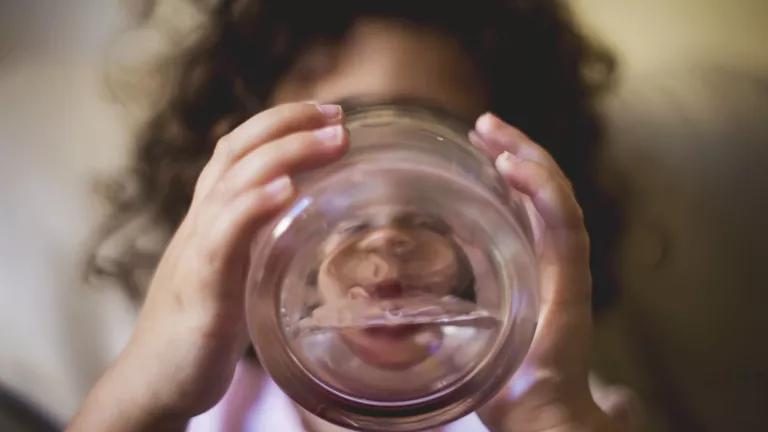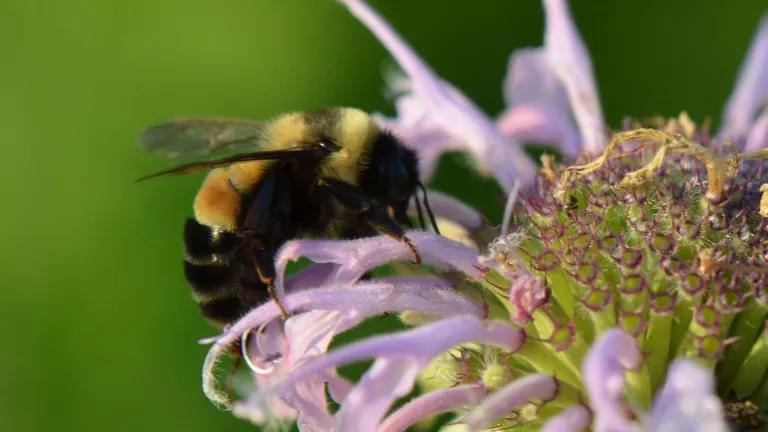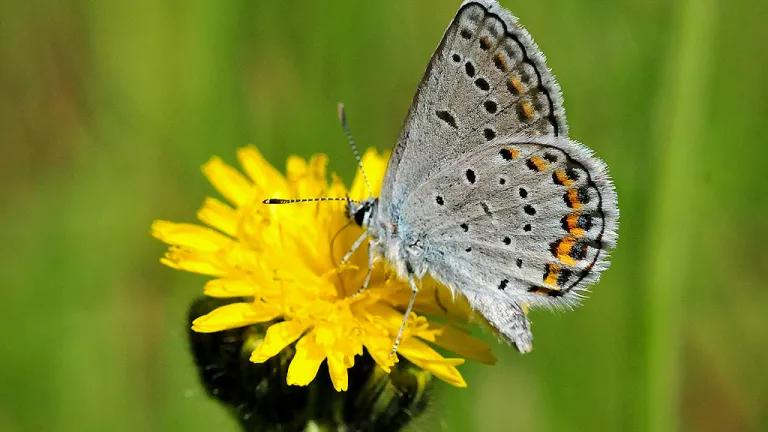Bees on the Brink: Will Minnesota Act to Save Them?
The legislature has a crucial opportunity to pass bills to protect people and pollinators from needless pesticide use.
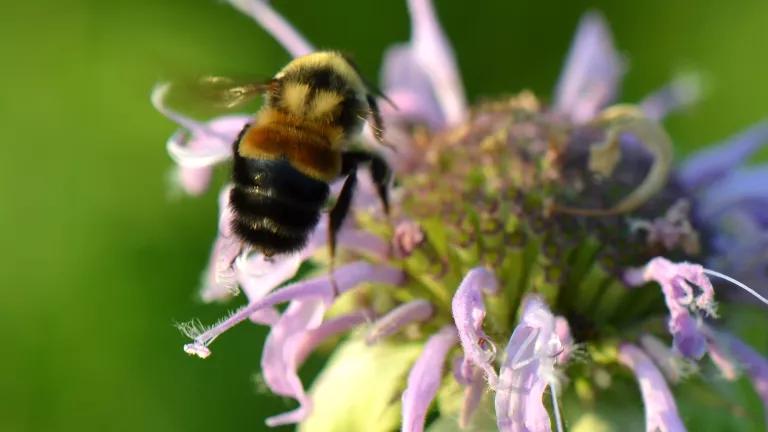
An endangered rusty patched bumble bee, Minnesota's state bee, hovering over a bergamot flower.
2023 was a landmark year for Minnesota’s pollinators. But as the legislature reconvenes this week, there is plenty more to be done lakes to protect people, pollinators, and other wildlife from pesticides. Specifically, two bills—HF2472/SF1718 and HF2805/SF1915—will help to reduce harmful, unnecessary, and wasteful uses of neurotoxic neonicotinoid pesticides, or “neonics.” With the legislature in session for just three months, the time to act is now.
Neonics are among the most ecologically disastrous pesticides since DDT. And they are everywhere in Minnesota. The Minnesota Department of Natural Resources has detected these neurotoxins in 94% of white-tailed deer all over the state as of 2021—a sharp increase from just two years earlier.
Water quality surveys underscore the scale of contamination. A 2021 study looked at water samples from rivers, streams, lakes, groundwater, and treated wastewater and found at least one neonic in 86% of samples.

A field of corn. Nearly all corn grown in the U.S. is grown from a neonic-treated seed.
Widespread neonic contamination is an ecological disaster and presents serious threats to human health. Here are three of the key impacts of this needless contamination:
- Neurotoxic neonics threaten children’s health. A nationwide study has found neonics in 95% of the bodies of 171 pregnant women tested, and other research shows that these neurotoxins easily pass to a developing fetus. Neonics are linked with a variety of developmental harms. And because they are neurotoxic, like lead or mercury, health experts have cautioned that there may be no safe level of exposure for the developing brains of children.
- Neonics are wiping out bees and other key crop pollinators. They are toxic to bees in extraordinarily small amounts and, at even lower amounts, can impact bees’ immune system, navigation, memory, and other functions critical to their survival and reproduction. As neonic use exploded in the mid-2000s, honey bee colony losses similarly skyrocketed. Now, concern is even greater for the hundreds of wild bee species. Honey bees and wild bees alike are critical for the future of our food supply, and neonic use calls that future into question.
- Neonics hollow out ecosystems. Because of their extreme toxicity, neonics wipe out the bugs and other creatures that so many species depend on for food—like birds, fish, and amphibians. These include migratory birds, game birds, and fish that prop up Minnesota’s multi-billion-dollar outdoor recreation industry.
The main source of this contamination is clear: neonic-coated crop seeds used on upwards of 14 million acres statewide—an area twice the size of Massachusetts—each year. These treated seeds are incredibly wasteful. Ninety-five percent or more of the neonics applied to crop seeds enter the soil, where they migrate easily to contaminate whole ecosystems.
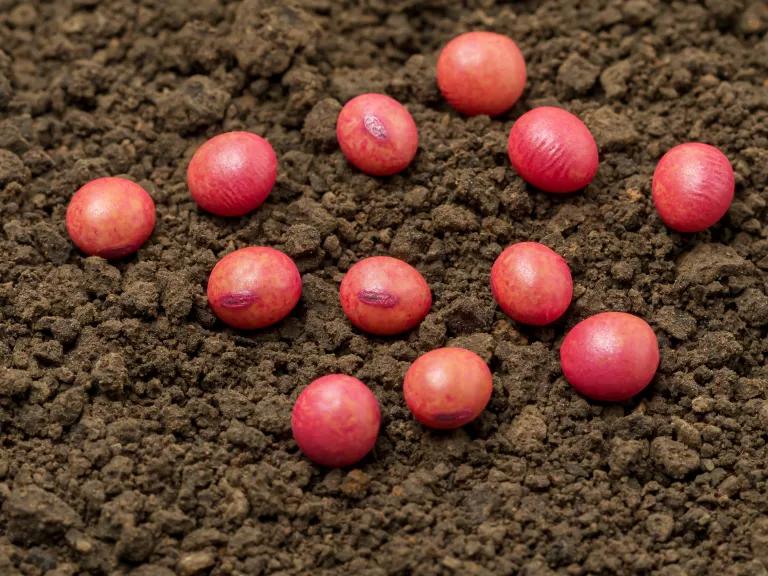
Leading research shows that the most widespread uses of neonic-treated seeds do not benefit farmers economically. Nevertheless, use is widespread because of marketing and misinformation from the multi-billion-dollar corporations that profit from neonic overuse. Overuse not only causes vast contamination, but adds unnecessary input costs for farmers with already razor-thin profit margins.
Making matters worse, the Minnesota Department of Agriculture has not stepped in to correct this mess because of a supposed loophole in state pesticide law. As a result, treated seeds are not subject to regulations designed to protect people and the environment from pesticide harms.
Minnesota can close this gaping loophole and drastically reduce neonic pollution by passing two bills this year, both sponsored by environmental and human health champions Representative Rick Hansen and Senator Mary Kunesh. First, SF1718/HF2472 would close the treated seed loophole and ensure that seeds treated with systemic pesticides, like neonics, are used only in the few instances where they benefit farmers. This groundbreaking bill would make Minnesota a leader in protecting pollinators, soil health, and clean water while preserving flexibility for farmers.
Second, SF1915/2805 would prohibit lawn and garden neonic uses that pollute urban and suburban areas where many Minnesotans live. These uses are unnecessary or replaceable with less harmful pest control alternatives.
With people, pollinators, and the future of our food supply at risk, there is no time for more delay. Minnesota must act now to pass these bills into law. Check back for updates as the session progresses.


